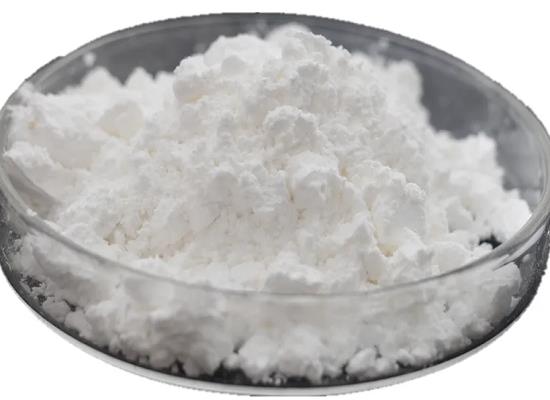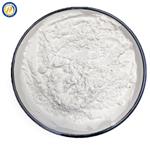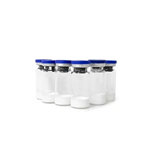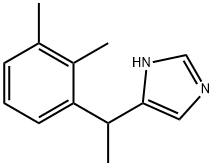Medetomidine: Potent Analgesic and Cardiovascular Effects in Veterinary Practice
Mar 5,2024
General Description
Medetomidine, an α2-Adrenoceptor agonist, showcases potent analgesic effects by stimulating receptors in the pain pathway, modulating nociceptive signals at both spinal and supraspinal levels. Its synergistic action with opioids enhances antinociceptive effects. Furthermore, Medetomidine demonstrates cardiovascular impact through bradycardia and hypotension via central and peripheral receptor stimulation. The drug's vasopressor effect increases vascular resistance, influencing blood pressure. Careful consideration is necessary when using medetomidine in animals with cardiovascular or autonomic system abnormalities. Dosage ranges from 5 to 20 μg/kg for premedication and can be tailored for individual needs, emphasizing close monitoring for safe and effective use in veterinary procedures.

Figure 1. Medetomidine
Pharmacological activities
Analgesic effects
Medetomidine is an α2-Adrenoceptor agonist that produces analgesic effects by stimulating receptors at various sites in the pain pathway, both at the spinal and supraspinal levels. Studies have shown high concentrations of α2-binding sites in the dorsal horn of the spinal cord and the brainstem, indicating modulation of nociceptive signals. Electrophysiological studies have provided evidence for pre- and postsynaptic inhibitory mechanisms for the antinociceptive actions of α2-Adrenoceptor agonists. Medetomidine exhibits both spinal and supraspinal analgesic actions, with a close association between opioid and α2-adrenergic receptors. When administered simultaneously, these agonists enhance antinociceptive actions. In animal studies, epidural medetomidine has been shown to produce longer-lasting analgesia compared to fentanyl, lasting up to 20-185 minutes for hindlimbs and 15-90 minutes for forelimbs. Additionally, when combined with morphine, the duration of analgesia was significantly increased. These findings demonstrate the potent analgesic effect of medetomidine, particularly when used in combination with other analgesic agents. 1
Cardiovascular effects
Medetomidine exerts significant cardiovascular effects in dogs and cats. By stimulating central and peripheral receptors, it leads to bradycardia and hypotension. The stimulation of α2-adrenoceptors in the brain increases vagal tone while decreasing sympathetic activity, resulting in reduced heart rate and blood pressure. Peripheral α2-adrenoceptor stimulation inhibits noradrenaline release, further contributing to bradycardia. Additionally, postsynaptic receptor stimulation in arterial and venous walls induces a vasopressor effect, leading to increased vascular resistance. Medetomidine consistently produces marked bradycardia in dogs and cats, with variable effects on blood pressure. The duration and extent of bradycardia are dose-related. The drug's effects on heart rate primarily arise from centrally-mediated actions and peripheral presynaptic receptor stimulation, without evidence of direct action on the heart muscle. Furthermore, medetomidine has been shown to increase coronary vascular resistance, restrict coronary blood flow, and elevate central venous pressure. It also frequently induces transient increases in blood pressure through peripheral receptor stimulation before causing a decrease to pre-injection levels. When medetomidine-induced bradycardia is prevented by atropine or glycopyrrolate, it may be accompanied by tachycardia and hypertension. These findings underscore the complex and multifaceted cardiovascular effects of medetomidine, which should be carefully considered when used in animals with myocardial disease, autonomic system abnormalities, or atrioventricular block. Additionally, caution is advised due to its potential to overpower the hypoxemic autoregulatory response and induce prolonged hypertension. Management of severe bradycardia and arrhythmias may involve the use of the antagonist atipamezole. Furthermore, medetomidine has been shown to reduce cerebral blood flow without affecting the cerebral metabolic rate for oxygen. 1
Dosage
Medetomidine is a versatile medication in veterinary practice, commonly used for sedation, premedication, and short-duration surgical anesthesia in dogs and cats. The dosage ranges from 5 to 20 μg/kg administered intravenously, intramuscularly, or subcutaneously along with an opioid for premedication purposes. Lower doses of 1–2 μg/kg i.v. can help manage post-recovery excitation, requiring careful monitoring. Additionally, a continuous rate infusion of 2–4 μg/kg/h can deliver perioperative analgesia and rousable sedation, particularly effective when combined with opioid-based analgesia. Tailoring the dosage to individual patient needs and closely monitoring their response are crucial for ensuring safe and effective use of medetomidine in veterinary procedures. 2
Reference
1. Cullen LK. Medetomidine sedation in dogs and cats: a review of its pharmacology, antagonism and dose. Br Vet J. 1996;152(5):519-535.
2. Medetomidine In Dogs & Cats: Uses, Dosage and Side Effects. Vet Drugs List.
- Related articles
- Related Qustion
- Medetomidine:Clinical Pharmacology, Indications and Adverse Reactions Mar 14, 2023
Medetomidine is a potent non-narcotic alpha2 -adrenoreceptor agonist which produces sedation and analgesia. These effects are dose dependent in depth and duration.
Trenbolone, a potent steroid, enhances muscle growth, preserves mass during cutting, and boosts performance with recommended dosages for athletes and bodybuilders.....
Mar 5,2024APIPinacol Pinacolone rearrangement is an essential process in organic chemistry for converting 1,2 diols into carbonyl compounds containing a carbon-oxygen double bond.....
Mar 5,2024Organic reagentsMedetomidine
86347-14-0You may like
- Medetomidine
-

- $1.00 / 1g
- 2024-04-29
- CAS:86347-14-0
- Min. Order: 1g
- Purity: 99%
- Supply Ability: 100kg
- Medetomidine
-

- $1.00 / 1KG
- 2024-04-29
- CAS:86347-14-0
- Min. Order: 0.1KG
- Purity: 99%
- Supply Ability: 20 tons
- Medetomidine HCl Hydrochloride Medetomidine
-

- $1.50 / 1g
- 2024-04-29
- CAS:86347-14-0
- Min. Order: 10g
- Purity: 99%
- Supply Ability: 20tons




